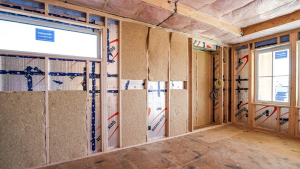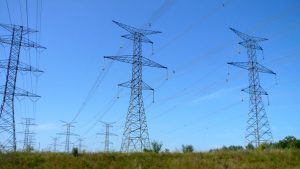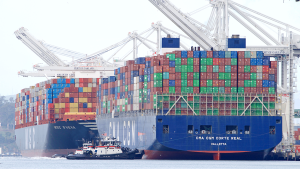A tree growing in the forest, planted 30 years ago and now standing 50 feet tall, has absorbed 49lbs of CO2 every year. Over a 100-year lifespan, it will absorb 2.5 tons of CO2 and in exchange will release each day oxygen into the atmosphere sufficient enough to supply four people.
Then one day that tree is cut down by wood harvesters. Its ultimate fate is to become part of a Mass Timber Construction (MTC) component in a new building somewhere in the world. The designers and developers of that building will call the structure an example of environmental sustainability, and speak of the carbon embodied forever by the MTC components.
Construction is acknowledged to be environmentally destructive from a carbon standpoint. However, those wishing to protect the earth from climate catastrophe are promoting MTC as superior to other prime building materials like steel and concrete. Do their claims of MTC’s carbon advantage stand up to scrutiny, or is some green-washing involved?
Transforming a tree into an MTC component immediately halts and then reverses the tree’s decades-long carbon collection process. A further and significant amount of carbon is required to turn the harvested tree into something that can be used as a MTC component in a building. Is it any worse than the carbon created by concrete or steel? No one is really sure because studies are only now starting to look into the full carbon impact of producing MTC components.
In fact, making the effort to track forestry methods and then following the processing of MTC components to ensure the lowest possible total carbon emissions may require ethical sourcing techniques usually associated with products like coffee, sugar and clothing.
What we do know is that carbon costs were accumulating even before the tree was cut down. Forestry workers drove to the company depot in fossil-fuelled vehicles, loaded up gas-powered chainsaws, and drove fossil-fuelled trucks into the forest. After cutting the tree down, leaving most of the limbs and branches behind to decay on the forest floor and emit their collected carbon, the workers hauled the prime length trunk away on gas-powered transport trucks to the planing mill.
Massive saws cut and planed the trunk into multiple pieces which were then transported, again by fossil-fuelled truck or rail, to a fabrication point. There, those pieces were kiln-dried, planed and shaped again, glued into an MTC component of some sort, and transported by fossil-fuelled rail or ship to the final destination, a building site perhaps thousands of miles away.
What do current studies tell us? What we are learning about MTC production is that, like steel or concrete fabrication, it too is part of a dirty business. Overall, Canadian government figures say that wood products made from Canadian forests are responsible for 20 per cent of the country’s total CO2 emissions.
In their report, “Missing the Forest: How Carbon Loopholes for logging hinder Canada’s climate leadership”, authors Jennifer Skene and Michael Polanyi write, “Protecting the world’s forests, just like a rapid transition away from fossil fuels, is essential to avoiding the worst impacts of climate change. Forests…play an irreplaceable role in global carbon regulation, absorbing one-third of human-caused carbon emissions from the atmosphere annually and storing this carbon long-term in their soil and vegetation…. Once gone, they are irreplaceable on any meaningful human timescale.”
Some claim reforestation programmes somehow balance the carbon equation. However, the clear-cutting of forests results in enormous amounts of carbon being emitted from the soil, branches and vegetation left behind. Even after replanting, Skene and Polanyi say the forestry industry overall creates a carbon deficit that can last for decades.
Granted, studies suggest that, all things being equal, new trees absorb more carbon than old ones. It’s also said that all the CO2 sent into the atmosphere from human activity can actually help trees, both young and old, absorb even more carbon and grow faster.
But it’s more complex than that. Carbon intake varies among tree species. Slower growing species absorb more than fast ones. And simply planting more trees anywhere and everywhere is not always the best solution. Poor planning can lead to soil erosion and depletion of water tables even if the seedlings actually survive.
Admittedly, there is a carbon reduction argument to be made for MTC. For example, prefabricated MTC components can be quickly assembled on site, reducing carbon emissions versus traditional steel and concrete building processes.
“The amount of carbon stored in long-lasting products such as LVLs is greater than the emissions caused during the production stage,” says a promising 2021 study published by the Food and Agriculture Organisation of the United Nations. However, the term “production stage” is not fully defined.
“Buildings constructed with wood-based materials emit 20–50 percent net less GHG over a 100-year period than comparable constructions built with steel or concrete building systems,” the study continues. However, the methodologies leading to such conclusions are not immediately clear, nor whether they allow for anything other than ideal forestry and manufacturing processes and transportation efficiencies.
Even after considering best-case scenarios, the end-of-life prospects for MTC components are decidedly poor. It’s too early to predict the level of future re-purposing of MTC components. In the meantime, wood scrap represents 20 to 30 per cent of all construction and demolition waste, and 10 per cent of all materials deposited in landfills annually. Left either to “biodegrade” or burn as fuel, carbon is simply sent back into the atmosphere for another tree to capture.
There is so much still to learn. MTC components may have certain advantages, but at the same time they may not be the silver bullet for the construction industry’s carbon emission problem. Given the uncertainty of how a tree gets from the forest to the point of final on-site MTC assembly, procurement specialists should demand some sourcing transparency.











Recent Comments
comments for this post are closed